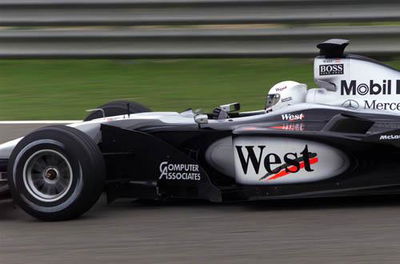Tracking the driver.
In the final part of Arrows' series on driver fitness, Simon Jones, OrangeArrows Physio, looks at the culmination of all the training and preparation once the drivers step into their race cars on Sunday afternoons, including how the team can track the physiological effects of racing on the drivers.

In the final part of Arrows' series on driver fitness, Simon Jones, OrangeArrows Physio, looks at the culmination of all the training and preparation once the drivers step into their race cars on Sunday afternoons, including how the team can track the physiological effects of racing on the drivers.
''It's very difficult to monitor exactly what is happening to the drivers inside the car, because at the moment it is very difficult to obtain real time data about their physiological condition. And this is something I'm working quite hard to change. We do have good pulse rate monitors so I am able to test them and see what they're doing in the car in a number of different scenarios, but currently that data can only be downloaded after the event.''
''Now I am working with the electronics guys on the team to be able to get that information real time, with the idea that I can try and predict fatigue. At this point, heart rate is probably the best indicator we have to use, because we would see the heart rate rising significantly if they were getting tired.''
''I'm currently doing some work with Jos Verstappen's engineer, which involves overlaying a track map on the drivers heart and pulse readings so we can track his physiological behaviour at different points on a circuit. We can then use this to predict his fatigue levels during the course of the race. We are also doing some work on cockpit temperature to measure its effect on pulse rate.''
''As well as getting real time measurements of their heart and pulse rates, I would also like to get a spyrometer fitted into a driver's helmet, because I'm very interested in looking at their breathing rate and seeing what their tidal volume is. I believe drivers breath hold quite significantly, and the risk there is that breath holding can lead to carbon dioxide retention which can then result in dizziness, blackouts etc.''
With an average race lasting for around 60 laps and nearly 2 hours, with a constant barrage of competing stresses, ranging from extreme weather conditions to high level G-force impacts, at what stage does the driver's physical and mental preparation become most significant?
''The most important period as far as I am concerned, is the last quarter of the race. That's where I think drivers win or lose it. If they train progressively, and I know that by the time they are in the car, that the drivers are psychologically and physiologically well prepared, then it really is down to the elements that I can't predict.''











